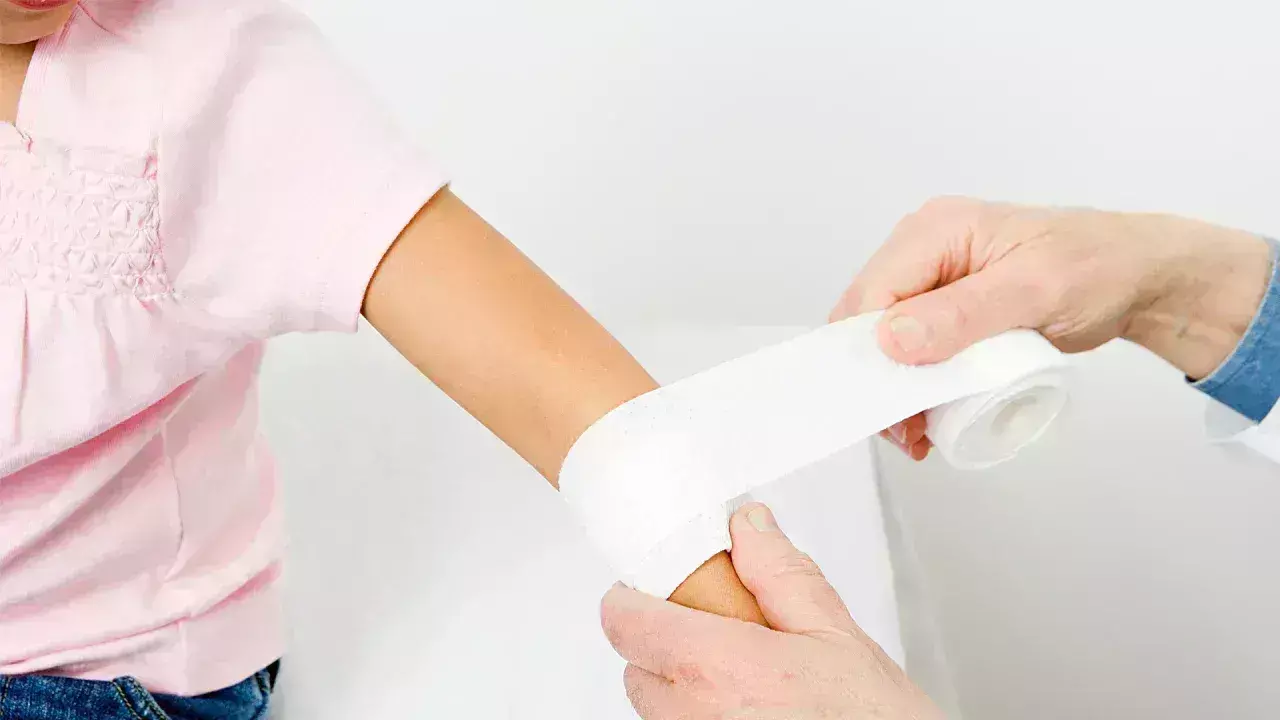- Home
- Medical news & Guidelines
- Anesthesiology
- Cardiology and CTVS
- Critical Care
- Dentistry
- Dermatology
- Diabetes and Endocrinology
- ENT
- Gastroenterology
- Medicine
- Nephrology
- Neurology
- Obstretics-Gynaecology
- Oncology
- Ophthalmology
- Orthopaedics
- Pediatrics-Neonatology
- Psychiatry
- Pulmonology
- Radiology
- Surgery
- Urology
- Laboratory Medicine
- Diet
- Nursing
- Paramedical
- Physiotherapy
- Health news
- Fact Check
- Bone Health Fact Check
- Brain Health Fact Check
- Cancer Related Fact Check
- Child Care Fact Check
- Dental and oral health fact check
- Diabetes and metabolic health fact check
- Diet and Nutrition Fact Check
- Eye and ENT Care Fact Check
- Fitness fact check
- Gut health fact check
- Heart health fact check
- Kidney health fact check
- Medical education fact check
- Men's health fact check
- Respiratory fact check
- Skin and hair care fact check
- Vaccine and Immunization fact check
- Women's health fact check
- AYUSH
- State News
- Andaman and Nicobar Islands
- Andhra Pradesh
- Arunachal Pradesh
- Assam
- Bihar
- Chandigarh
- Chattisgarh
- Dadra and Nagar Haveli
- Daman and Diu
- Delhi
- Goa
- Gujarat
- Haryana
- Himachal Pradesh
- Jammu & Kashmir
- Jharkhand
- Karnataka
- Kerala
- Ladakh
- Lakshadweep
- Madhya Pradesh
- Maharashtra
- Manipur
- Meghalaya
- Mizoram
- Nagaland
- Odisha
- Puducherry
- Punjab
- Rajasthan
- Sikkim
- Tamil Nadu
- Telangana
- Tripura
- Uttar Pradesh
- Uttrakhand
- West Bengal
- Medical Education
- Industry
Burnaid hydrogel dressing not superior to PVC Flim for acute burns in kids

Pain remains a major issue following a burn, and research suggests that pain from burn injuries continues to be undertreated in children. In recent research, investigators found no clear benefit of Burnaid hydrogel dressing, as an analgesic adjunct to first aid for the treatment of acute paediatric burns when compared with plasticised polyvinylchloride (PVC) film. The research has been published in BMJ Open on January 05, 2021.
Over the past decade, Burnaid hydrogel dressings have gained widespread use in the prehospital setting for acute burn injuries—and are promoted as providing hydration to the burn wound and pain relief via convection and evaporative cooling effect. PVC film offers protection from the external environment, Burnaid dressings provide evaporative cooling and a significant reduction in subdermal temperatures when air currents pass over the dressing. Despite the popularity among prehospital services, there is limited empirical evidence for the effectiveness of hydrogel burn dressings and no studies have been conducted in a paediatric burn population. At present, there is no robust empirical evidence to support the adoption of one particular acute burn dressing over the others. Therefore, investigators of Australia, conducted a study, to compare the effectiveness of two acute burn dressings, Burnaid hydrogel dressing and plasticised polyvinylchloride film, on reducing acute pain scores in paediatric burn patients following appropriate first aid.
It was a single-centre, superiority, two-arm, parallel-group, prospective randomised controlled trial in 72 pediatric patients presenting to the Emergency Department at the Queensland Children's Hospital, Brisbane, Australia with an acute thermal burn between September 2017 and September 2018. Investigators assigned the patients to receive either Burnaid hydrogel dressing (intervention n=37) or plasticised polyvinylchloride film (Control n=35) as an acute burn dressing. The major outcome assessed was observational pain scores from nursing staff assessed 5 min post-application of the randomised dressing, measured using the Face Legs Activity Cry and Consolability Scale. Repeated measures of pain, stress and re-epithelialisation were also collected at follow-up dressing changes until 95% wound re-epithelialisation occurred.
Upon evaluation, investigators identified no significant between-group differences in nursing (mean difference: −0.1) or caregiver (MD: 1) in observational pain scores. They also found no significant differences in child self-report pain (MD: 0.3), heart rate (MD: −3), temperature (MD: 0.6), stress (geometric mean ratio: 1.53), or re-epithelialisation rates (MD: −1) between the two groups.
The authors concluded, "A clear benefit of Burnaid hydrogel dressing as an analgesic adjunct to first aid for the treatment of acute paediatric burns was not identified in this investigation".
For further information:
https://bmjopen.bmj.com/content/11/1/e039981
Medical Dialogues Bureau consists of a team of passionate medical/scientific writers, led by doctors and healthcare researchers. Our team efforts to bring you updated and timely news about the important happenings of the medical and healthcare sector. Our editorial team can be reached at editorial@medicaldialogues.in.
Dr Kamal Kant Kohli-MBBS, DTCD- a chest specialist with more than 30 years of practice and a flair for writing clinical articles, Dr Kamal Kant Kohli joined Medical Dialogues as a Chief Editor of Medical News. Besides writing articles, as an editor, he proofreads and verifies all the medical content published on Medical Dialogues including those coming from journals, studies,medical conferences,guidelines etc. Email: drkohli@medicaldialogues.in. Contact no. 011-43720751


